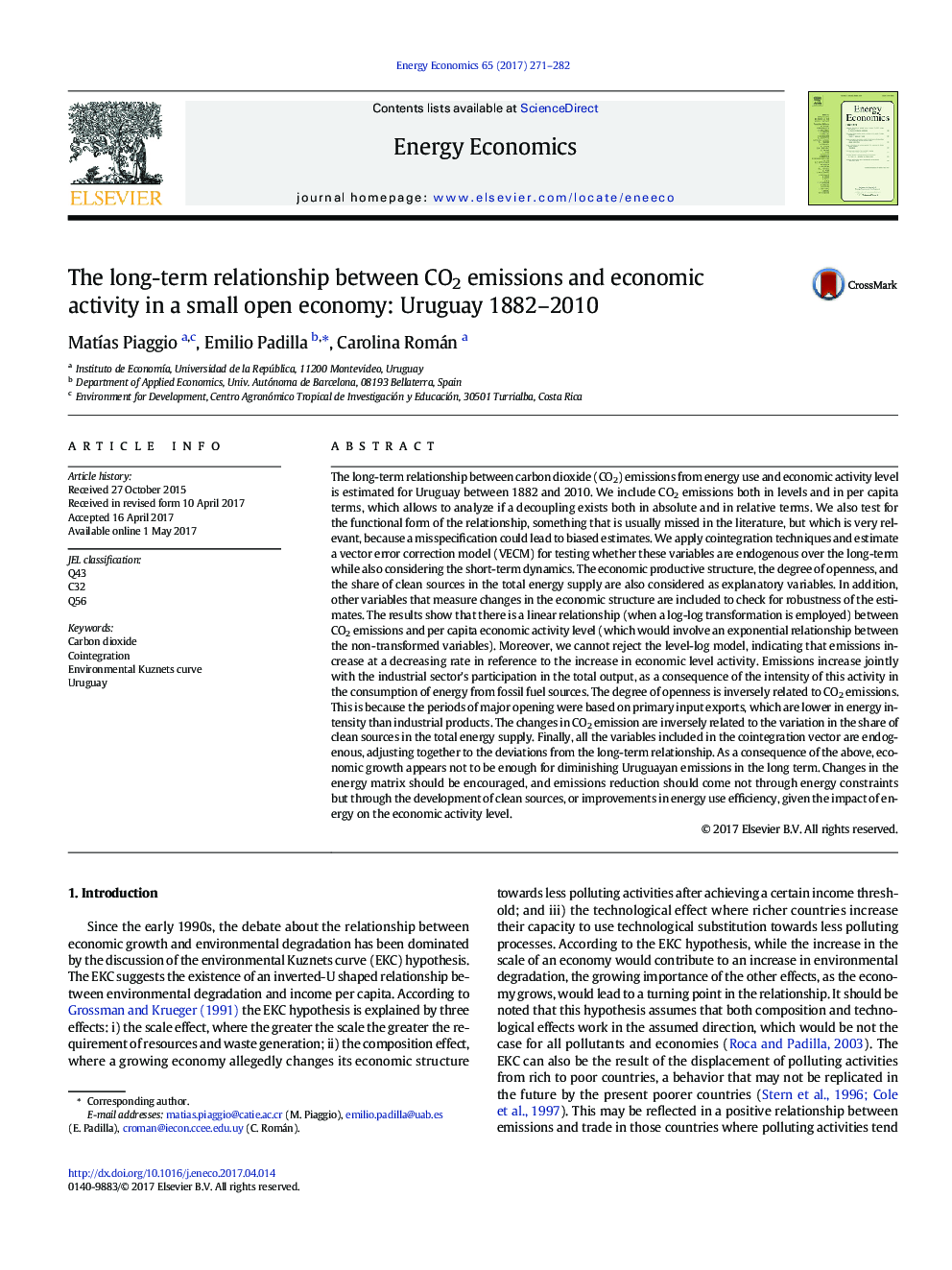| کد مقاله | کد نشریه | سال انتشار | مقاله انگلیسی | نسخه تمام متن |
|---|---|---|---|---|
| 5063813 | 1476699 | 2017 | 12 صفحه PDF | دانلود رایگان |

- The long-run relationship between CO2 and GDPpc is estimated for Uruguay, 1882-2010.
- CO2 levels and per capita are analyzed, looking to relative and absolute decoupling.
- CO2 and GDPpc have a linear log-log relationship.
- A decreasing rate (level-log specification) between CO2 and GDPpc cannot be rejected.
- Productive structure, openness and renewable energy share are significant determinants.
The long-term relationship between carbon dioxide (CO2) emissions from energy use and economic activity level is estimated for Uruguay between 1882 and 2010. We include CO2 emissions both in levels and in per capita terms, which allows to analyze if a decoupling exists both in absolute and in relative terms. We also test for the functional form of the relationship, something that is usually missed in the literature, but which is very relevant, because a misspecification could lead to biased estimates. We apply cointegration techniques and estimate a vector error correction model (VECM) for testing whether these variables are endogenous over the long-term while also considering the short-term dynamics. The economic productive structure, the degree of openness, and the share of clean sources in the total energy supply are also considered as explanatory variables. In addition, other variables that measure changes in the economic structure are included to check for robustness of the estimates. The results show that there is a linear relationship (when a log-log transformation is employed) between CO2 emissions and per capita economic activity level (which would involve an exponential relationship between the non-transformed variables). Moreover, we cannot reject the level-log model, indicating that emissions increase at a decreasing rate in reference to the increase in economic level activity. Emissions increase jointly with the industrial sector's participation in the total output, as a consequence of the intensity of this activity in the consumption of energy from fossil fuel sources. The degree of openness is inversely related to CO2 emissions. This is because the periods of major opening were based on primary input exports, which are lower in energy intensity than industrial products. The changes in CO2 emission are inversely related to the variation in the share of clean sources in the total energy supply. Finally, all the variables included in the cointegration vector are endogenous, adjusting together to the deviations from the long-term relationship. As a consequence of the above, economic growth appears not to be enough for diminishing Uruguayan emissions in the long term. Changes in the energy matrix should be encouraged, and emissions reduction should come not through energy constraints but through the development of clean sources, or improvements in energy use efficiency, given the impact of energy on the economic activity level.
Journal: Energy Economics - Volume 65, June 2017, Pages 271-282